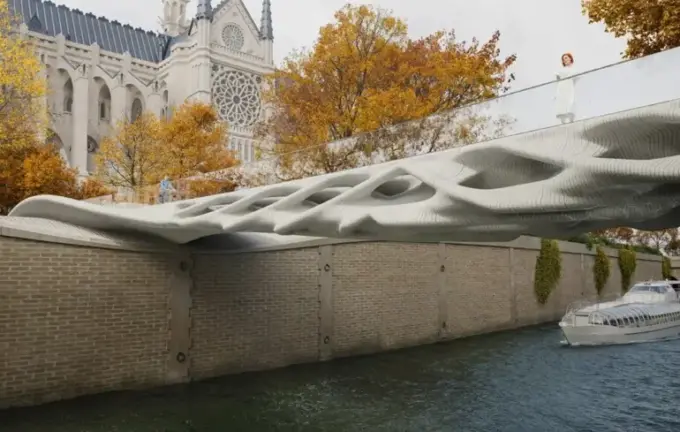Bridge of the Future: Innovative Carbon-Absorbing Concrete Revolutionizes Architecture

Scientists from the University of Pennsylvania have achieved a breakthrough in infrastructure development by creating a unique 3D-printed concrete structure capable of not only maintaining strength and durability but also actively absorbing carbon dioxide from the environment.
This new development is part of the Diamanti project, which leverages eco-friendly materials and natural-inspired designs and structures.
One of the first applications is a pedestrian bridge that uses 60% less material, significantly reducing resource consumption during construction.
The project leader, Associate Professor Masoud Akbarzade, explains that the bridge’s structure is based on triply periodic minimal surfaces (TPMS), similar to human bone tissue, enabling optimal load distribution and extending surface area for CO₂ absorption by an additional 30%.
According to the researchers, such technology not only lowers carbon emissions during manufacturing but also contributes to air purification and air quality improvement.
The concept behind Diamanti is inspired by natural processes, using materials efficiently to achieve maximum environmental benefits.
The team aims to scale this technology for broader applications, including prefabricated concrete elements such as slabs and wall panels.
A key feature is the use of modular components printed by robotic 3D printers and connected via tension cables, reducing the use of steel by up to 80% and decreasing overall construction costs by 25–30%.
Experts warn about challenges in scaling these innovations, particularly regarding the limited global production of diatomaceous earth, a critical component in the new concrete mix.
Nevertheless, scientists believe that such technological advancements could become a vital part of reducing global greenhouse gas emissions, given that concrete production is one of the largest sources of CO₂.
Ultimately, these innovations are set to transform architecture and infrastructure, turning buildings into active participants in environmental cleanup efforts.
Addressing climate change requires urgent and large-scale efforts, especially as coral reefs face near irreversible collapse and global temperatures continue to rise.
Innovations like eco-friendly concrete could be key components of the global strategy to combat climate change.

